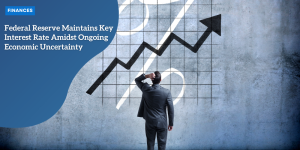RBA Governor Downplays Potential Inflation Effects of Federal Government’s $300 Energy Bill Rebate

Anúncios
In a Senate estimates hearing at Parliament House, the Governor of the Reserve Bank of Australia (RBA), Michele Bullock, addressed the potential inflationary impacts of the federal government’s proposed $300 energy bill rebate.
The rebate, a central feature of May’s federal budget, has generated extensive discussion, particularly regarding its implications for inflation and economic stability.
Mitigating Inflation Concerns: RBA’s Standpoint
Governor Michele Bullock emphasized that the $300 energy bill relief would not have a substantial impact on reducing inflation.
However, she also clarified that it was unlikely to exacerbate inflationary pressures.
Anúncios
During the Senate committee session, she assured that the central bank would “look through” the rebate’s effects on the headline inflation rate and would instead focus on the preferred “underlying” measure of inflation.
However, she expressed skepticism about the rebate significantly altering consumer spending behaviors.
Psychological Impact Versus Economic Reality
Ms. Bullock elaborated that the psychological impact of receiving a $300 rebate might differ from the actual economic implications.
While acknowledging that this aid would assist those currently struggling with their energy bills, she stressed that from an inflationary perspective, the rebate’s influence would be minimal.
Anúncios
“If you hand someone $300 and say ‘here’s $300,’ I think psychologically, they think of that differently,” she added.
She underlined that although the rebate is beneficial for those in financial distress, it would not materially alter inflation forecasts.
Federal Government’s Forecast and Broader Economic Context
The federal government had projected that its cost-of-living relief measures, including the energy bill relief, would contribute to a 0.5 percentage point reduction in the Consumer Price Index (CPI) by year-end. However, Ms. Bullock maintained caution about these predictions, reiterating that the Australian economy is navigating a “narrow path.”
This phrase has become emblematic of the RBA’s approach to reducing inflation while maintaining job market stability and avoiding an economic recession, often referred to as achieving a “soft landing.”
Interest Rates: A Tool with Delayed Effects
Discussing the impact of recent interest rate adjustments, Ms. Bullock remarked that monetary policy changes, which encompass interest rate hikes, typically take 12 to 18 months to fully permeate the broader economy.
Since May 2022, the cash rate has risen from 0.1% to 4.35%—a level not seen since November 2011 and representing the steepest rate hiking cycle in RBA’s history.
When questioned by Labor Senator Deborah O’Neill regarding the effect of these rate increases, Bullock pointed out, “Looking ahead, perhaps another 50 basis points (0.5 percentage points) or so could potentially materialize over the next 12 months.”
Uncertainties and Future Rate Adjustments
Despite the increase in interest rates, significant uncertainties loom over the economy.
Monthly inflation figures have shown recent upticks, prompting the RBA to consider the possibility of further rate hikes if necessary.
Ms. Bullock indicated that adjustments to interest rates would be contingent on economic performance and inflation pressures.
Conversely, if the economy weakens more than anticipated, leading to downward pressure on inflation, the RBA would consider easing rates.
Comprehensive Quarterly Data Preferred
Ms. Bullock emphasized the importance of quarterly inflation figures, which provide a more complete picture of the economy compared to monthly data.
Unfortunately, the quarterly reports’ infrequency—only four times a year—adds to the challenge of timely economic assessments.
Economic Growth: A Shrinking Metric
In conjunction with Ms. Bullock’s Senate committee appearance, the Australian Bureau of Statistics (ABS) released national accounts data showing that the economy grew by a mere 0.1% in the year’s first quarter.
This weak growth represents the fifth consecutive decline in GDP on a per capita basis since late 2022, effectively placing the economy in a “per capita recession.”
Evaluating GDP Trends
When asked about GDP trends by Senator Jane Hume, Ms. Bullock revealed that the central bank anticipates low growth rates, implying a likely decline in per capita GDP.
Although uncertain about the exact number of consecutive quarters with negative or zero growth, she noted that it would be at least two, possibly three.
Government Budget: Expansionary or Contractionary?
A pivotal question at the hearing was whether the federal government’s budget should be classified as expansionary or contractionary.
Ms. Bullock described the query as complex, citing multiple factors influencing the economic environment.
Aspects such as international dynamics, particularly China’s economic performance, further complicate the assessment.
Thus, Ms. Bullock refrained from simplistic categorizations, opting instead for a nuanced understanding of the budget’s effects.
Revision of Economic Forecasts
Looking ahead, the RBA plans to factor in the federal budget, private sector dynamics, and international economic conditions when revising its inflation forecasts in August.
Ms. Bullock noted that Treasury’s forecasts align with the RBA’s timeline, predicting a return to the targeted inflation band by 2026.
Conclusion: Navigating Complex Economic Terrain
In summary, RBA Governor Michele Bullock’s Senate estimates hearing provided crucial insights into the central bank’s approach to managing inflation amid economic uncertainties.
The modest impact of the $300 energy bill rebate on inflation, combined with the cautious optimism about navigating the “narrow path,” underscores the intricate balance required in economic policymaking.
Interest rate adjustments remain the primary tool for influencing economic conditions, though their effects are not immediate.
The broader economic context, characterized by gradual GDP growth and complex budget assessments, compels a measured, multifaceted approach to fiscal and monetary policy.
Ultimately, the RBA’s vigilance in monitoring inflation and readiness to adjust rates accordingly reflects a commitment to preserving economic stability while addressing cost-of-living challenges.
As Australia continues to traverse this nuanced economic landscape, the combined efforts of monetary authorities and government policies will be pivotal in ensuring a resilient and balanced economic future.






